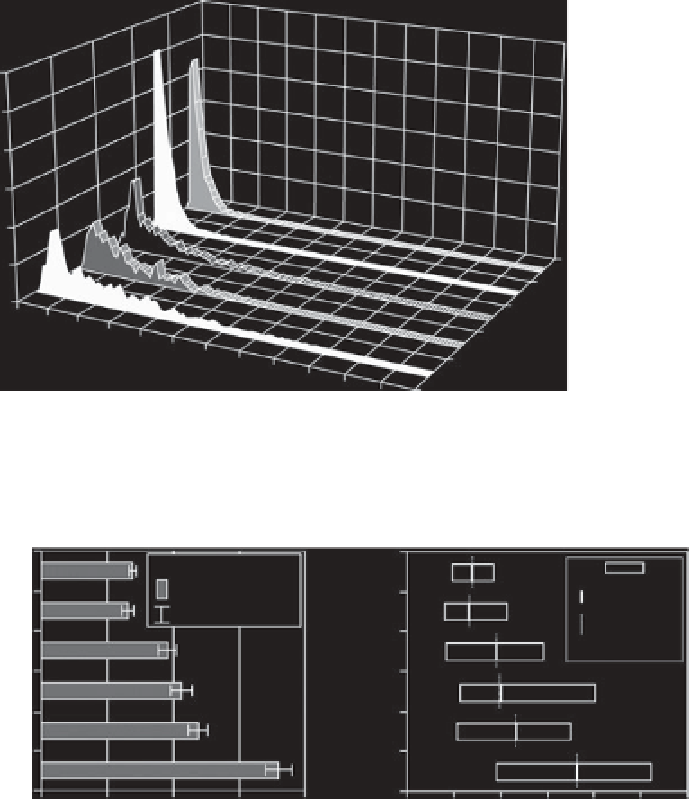Agriculture Reference
In-Depth Information
30
25
20
15
10
5
0
Length class (mm)
Fig. 10.18.
Almeter length values.
(a)
(b)
Stelometer 3.2 mm
Mean value
95%-level o. conf.
x
min
x
max
GADO
GADO
Median
GAD
GAD
Mean
FA
FA
n = 50
MA
MA
GA
GA
RS
RS
0 20
Collective strength, cN/tex
40
60
80
0
20
40
60
80
100
120
Collective strength, cN/tex
Fig. 10.19.
Stelometer values (Müssig, 2001a).
collective. While it is not possible to count the
elements in a collective after each Stelometer
test, a concept was worked out to calculate a
so-called 'number index' (Müssig, 2001a).
Using this number index, it is possible to com-
pare Stelometer results in a much better way.
The number of elements in the collective can
be estimated by the following equation:
level (1.7 for K1-RS) to 19.6 for hemp sample
K1-GADO. The increasing number of ele-
ments leads to the effect described by Suh
et
al
. (1994) and reduces the collective strength.
How large this effect is and whether there is an
overlapping effect from the general damage to
the fibre bundles from the separation process
can only be answered by measuring the fibres
and bundles in a single-element test. The results
achieved by single-element tests are given in
the following section.
Number index = (mean fineness of the
tested collectives in tex)/(gravimetric
fineness of the sample in tex)
The results (Stelometer collective strength,
gravimetric fineness and calculated number
index) are given in Fig. 10.20.
The calculated mean number of elements
in the tested collectives increases from a low
Single-element test
INSTRON UNIVERSAL TENSILE TESTER
.
Samples
RS, GA, FA and GADO from trial K1 were
tested with an Instron universal tensile tester

